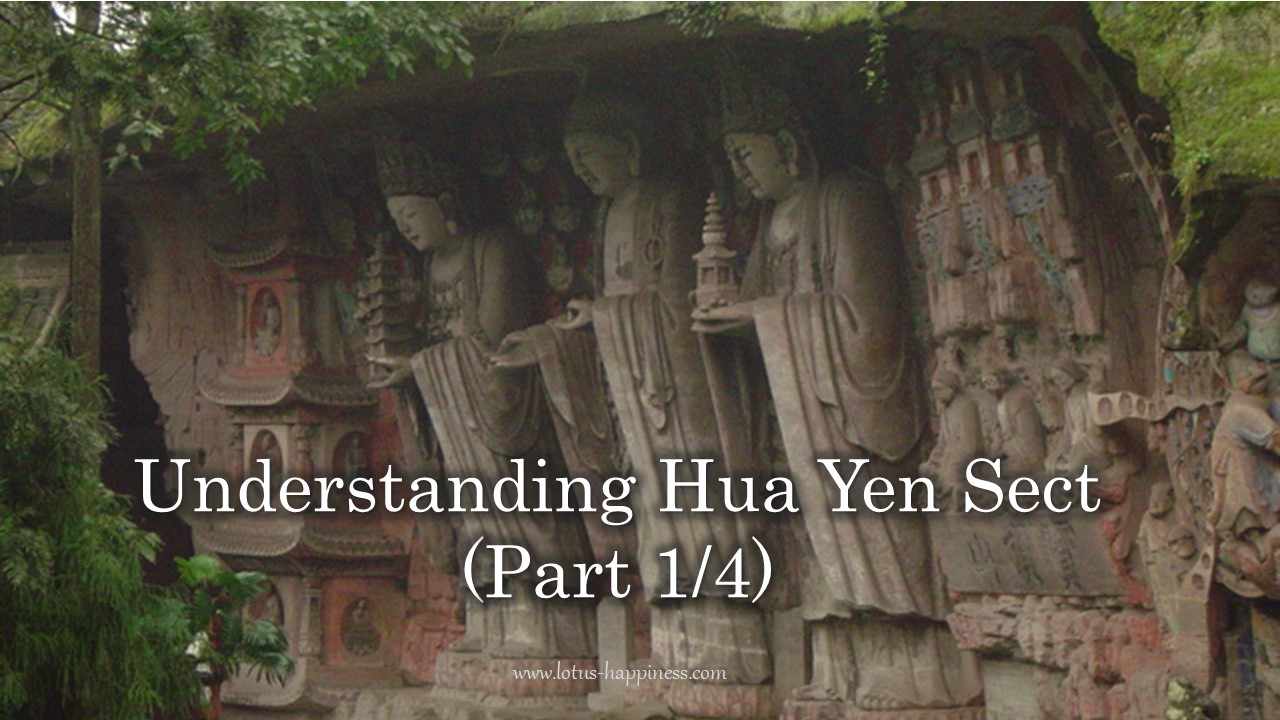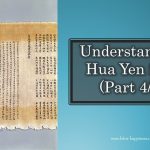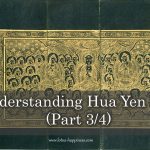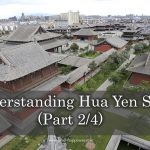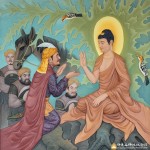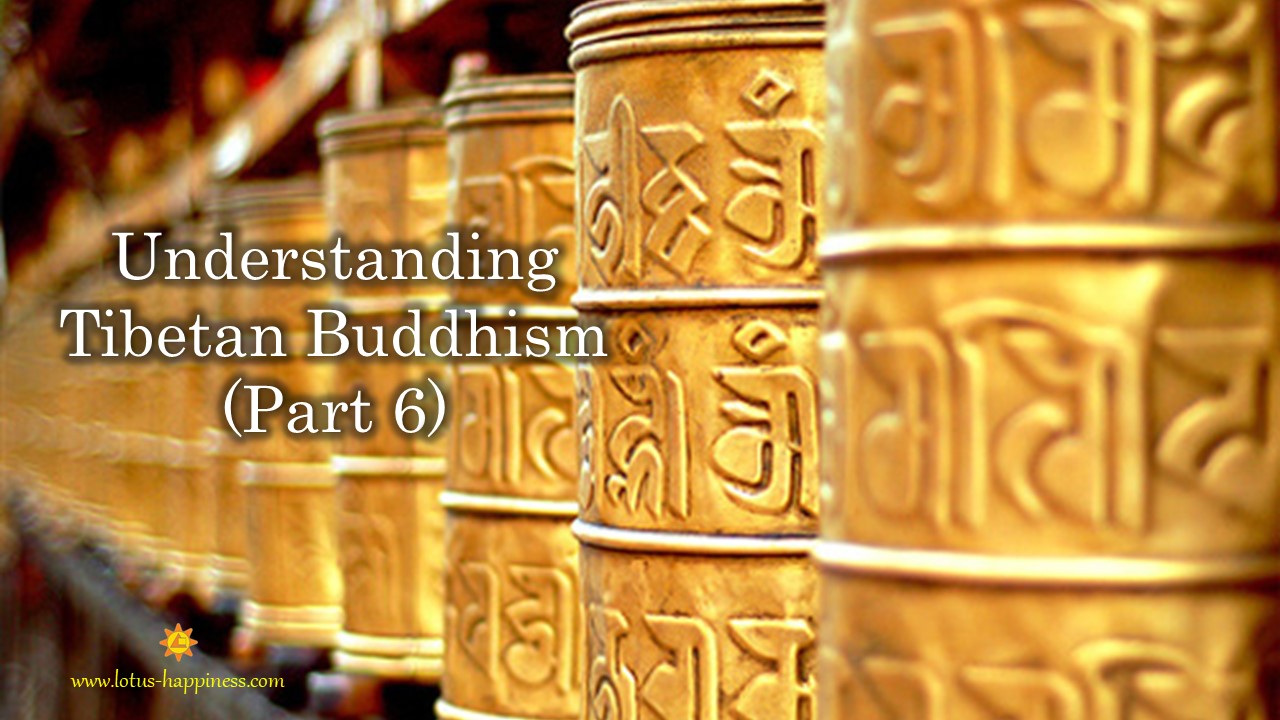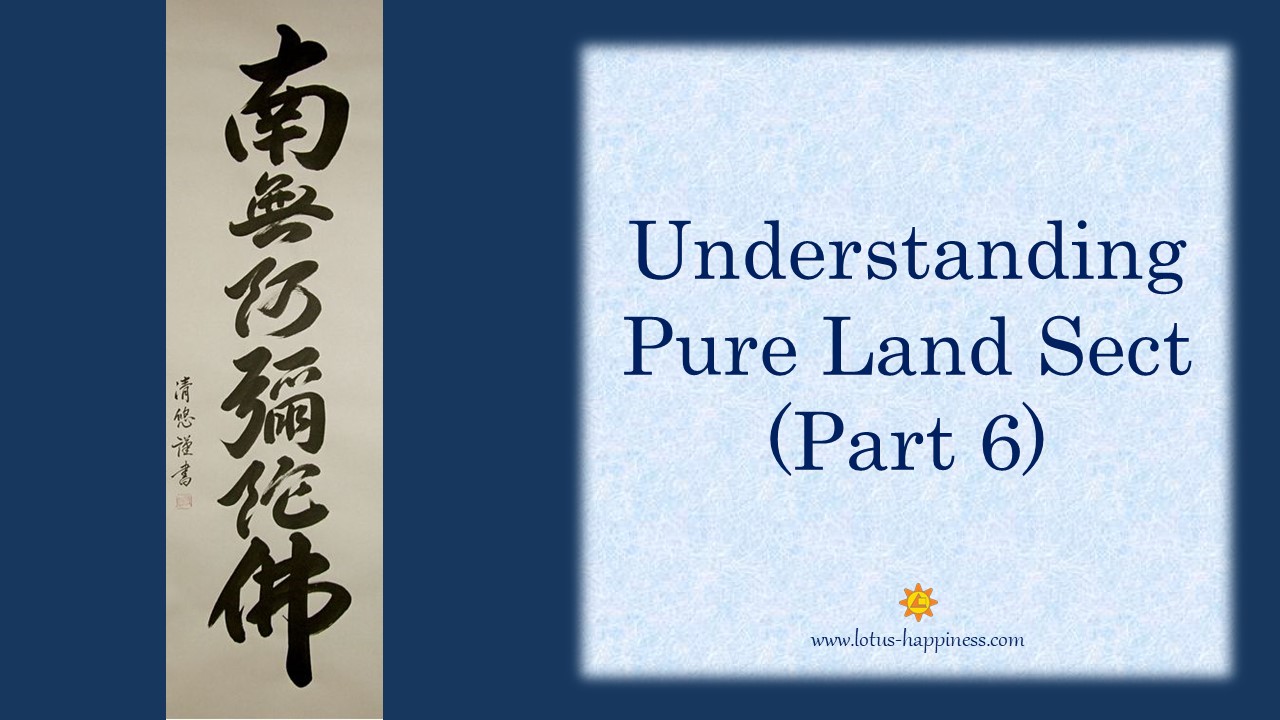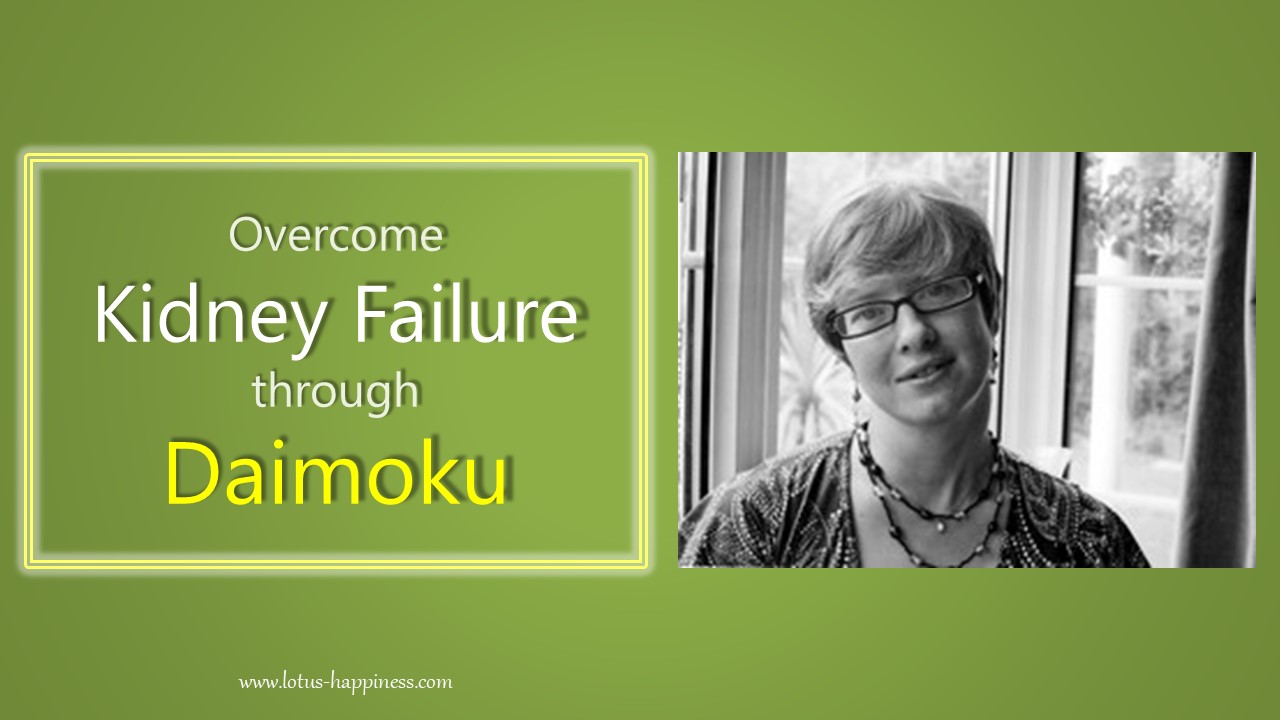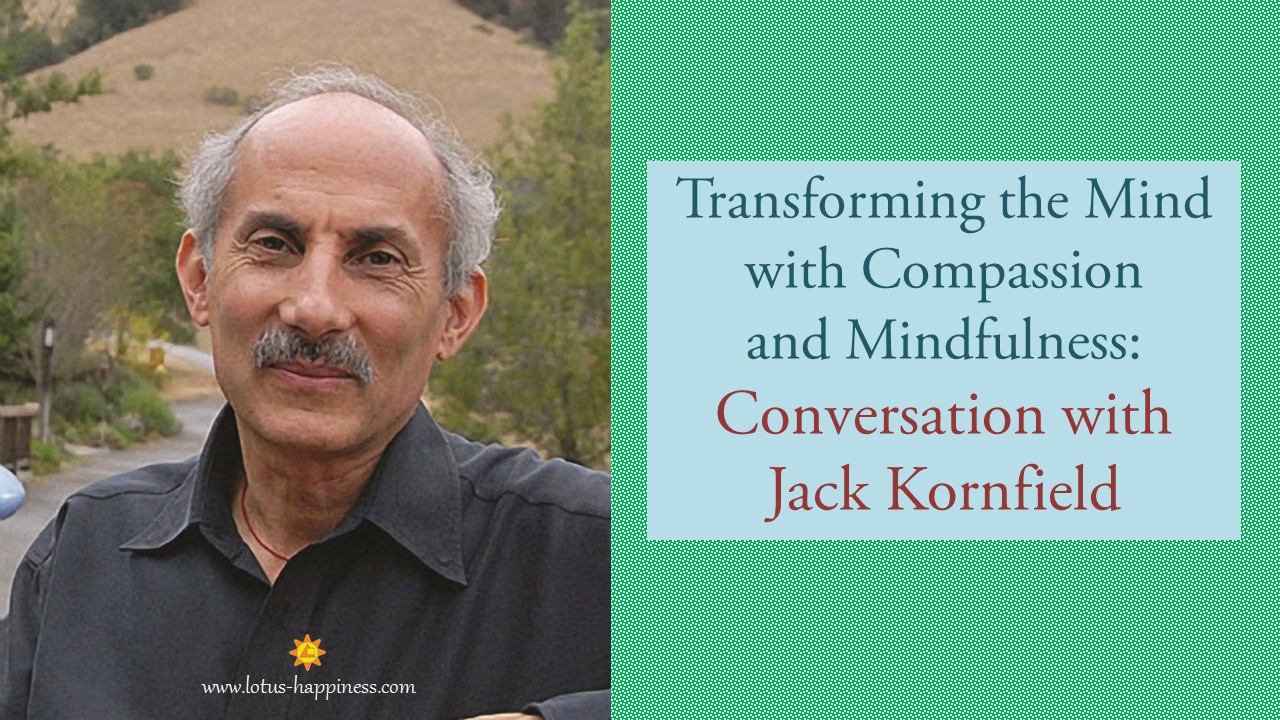Understanding Hua Yen Sect (Part 1/4)
Name
Hua-yen [華嚴] is the pronunciation of Flower Adornment, which is translated from the Sanskrit word Avatamsaka, the name of one of the most famous sutra in Buddhism. This sect takes its name from the Avatamsaka Sutra, which is the principal text of the sect. Literally, Avatamsaka means Flower Adornment, or Flower Garland, or Flower Ornament.
The sect is also known as Hsien-shou [賢首] sect. Hsien-shou was another name of the third patriarch, Master Fa-tsang [法藏], who was so remarkable and respectful that people called this sect after his name.
Development
Hua-yen is generally classified as a scholastic sect for its philosophical approach in its teaching. It was originated in China and was established by Master Tu-shun [杜順] (557-640 AD), and its started to flourish at the time of the third patriarch Master Fa-tsang [法藏] (643-712 AD).
Shortly after the death of the fifth patriarch Tsung-mi [宗密], Buddhism was suppressed in the Period of Five Dynasties. Under such circumstances, no more Hua-yen master appeared and the school declined in 9th century after flourishing for over 200 years in China.
The Patriarchs
The following five masters are important to the formation and development of Hua-yen sect:
- Fa-shun [法順]558-640 AD
Fa-shun was his Dharma name. As Tu was his last name, he was also called Tu-shun [杜順]. He was ordained by the Ch’an master Tao-chen, and devoted himself to the Dhyana meditation practice. With his great healing power and profound knowledge in Buddhism, he was bestowed the honorary title ‘the Holy one of the Imperial Heart’ by the Emperor. Because of his miraculous power, people called him ‘the Bodhisattva of Tun-huang’ [敦煌菩薩].
Tu-shun did not follow a particular teacher in the hierarchy of this school. He concentrated his study on Hua-yen and lived on Mount Zhong-nan [終南山] for many years. He wrote the essay On the Meditation of Dharmashatu. He established the concept of ‘Contemplating the Dharmadhatu’ [一觀法界], which set the pattern for the subsequent commentaries. He also established the concept of ‘Round Doctrine’ [圓教], which reflects the totalistic view in the Hua-yen sect. He was considered to be the first patriarch in Hua-yen sect.
- Chih-yen [智儼]602-668 AD
Chih-yen, the successor of Tu-shun, is the second patriarch of Hua-yen sect. He was also called Yun-hua [雲華] because he often preached the Avatamsaka Sutra in Yun-hua temple. His important writings include The Ten Mysteries in One Vehicle of Hua Yen, The Fifty Questions and Answers of the Hua Yen Doctrine, Notes and Commentaries on the Various Chapters of Hua Yen Sutra, and A Search for the Profound Mysteries of Hua Yen Sutra. Chih-yen was the one who proposed the Ten Mysteries, which was perhaps his most important contribution in the development of Hua-yen doctrines.
- Fa-tsang [法藏]643-712 AD
Among the disciples of Chih-yen, Fa-tsang was definitely the most outstanding one. He was also called ‘Hsien-shou’ [賢首], which meant ‘the head of the wise’, a respectful name given by his followers. He was given by the Emperor an honorary title ‘Kuo-i’ [國一], which meant ‘One in the State’.
He was also regarded as the most productive writer among all Hua-yen masters, because he wrote one hundred volumes of books and essays. He systematized and organized the Hua-yen doctrines. Because of his tremendous effort in preaching and writing on the Hua-yen doctrines, Hua-yen sect was also called Hsien-shou sect [賢首宗].
In his youth, he assisted Hsuan-tsang [玄奘] and I-tsing [義淨] in the translation work. However, he was greatly impressed by the preaching of Chih-yen and became his disciple in the Yun-hua Monastery. He was formally ordained at twenty-eight when he was appointed the abbot of the newly built Tai-yuan Monastery by the Empress Wu [武則天].
As he was so familiar with Buddhabhadra’s translation of Avatamsaka Sutra, he was invited to assist Sikshanamda in the translation of the 80-fascicle Avatamsaka Sutra. It was said that he preached the entire Avatamsaka Sutra more than thirty times during his lifetime. His enlightening illustration of Hua-yen doctrines with a golden lion in the writing On the Golden Lion [金獅子章] will be elaborated in the following chapters.
When he died at the age of seventy, a state funeral was held in his honor since he had served as the National Preceptor for four emperors in Tang Dynasty.

